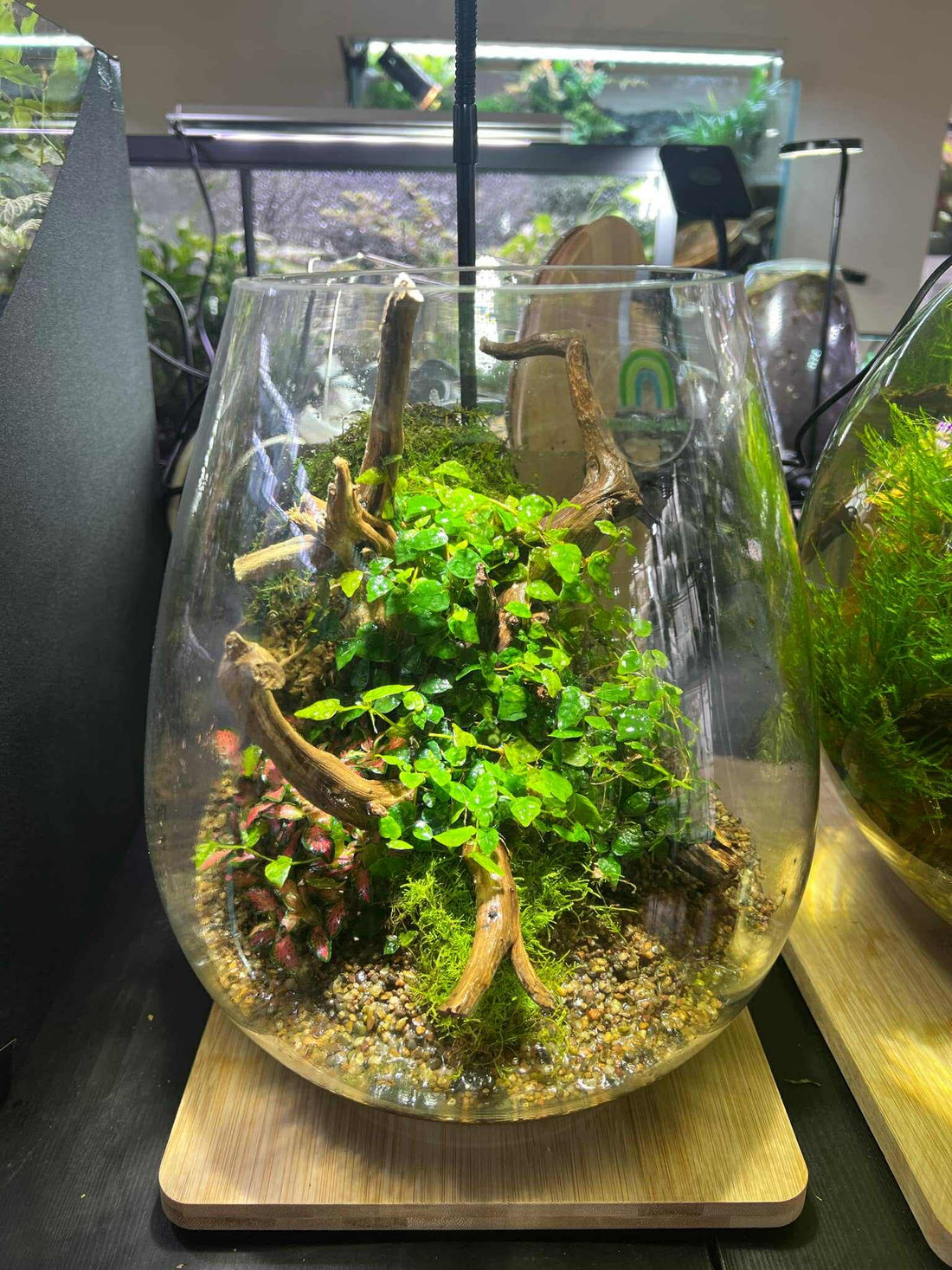
💧 How to Maintain Humidity and Drainage Balance in Your Terrarium or Paludarium
Danny PhamShare
Creating a lush, thriving terrarium or paludarium isn’t just about choosing the right plants—it’s about maintaining the right balance of humidity and drainage. Get this wrong, and you might face mold, rot, or wilting. Get it right, and you’ll enjoy a healthy, self-sustaining ecosystem that flourishes with minimal effort.
In this guide, we’ll cover how to achieve that sweet spot where water supports—not suffocates—your miniature world.
🌫️ Why Humidity Matters
Humidity is the amount of moisture in the air. Terrarium and paludarium plants (especially mosses, ferns, and tropical varieties) thrive in moderate to high humidity, often between 60–90%, depending on the species.
Too low → dry, crispy leaves
Too high → mold, fungus, rot
💦 Why Drainage Is Equally Important
Drainage ensures excess water doesn't build up around the roots, which can lead to root rot, bad odors, and algae.
Without proper drainage:
Water stagnates
Microbial growth increases
Plants suffocate
✅ How to Maintain the Balance
1. Start with a Proper Substrate & Drainage Layer
Base Layer: Add 2–4 cm of gravel, LECA (lightweight clay balls), or pebbles at the bottom.
Barrier: Use mesh screen or breathable fabric to separate this layer from soil.
Substrate: Use a well-draining mix like ABG (Atlanta Botanical Gardens) mix or a custom blend (e.g., coco coir + sphagnum moss + orchid bark + charcoal).
👉 Paludariums: Include a water reservoir or pump system to cycle water and prevent stagnant pockets.
2. Control Humidity with the Right Lid and Ventilation
Closed terrariums naturally trap humidity—great for tropical plants.
Open or vented setups suit succulents or setups needing airflow.
Add vents or crack lids slightly if condensation builds excessively.
Use a hygrometer to monitor humidity levels (cheap and effective).
3. Mist Properly, Don’t Overwater
Mist only when needed—once daily for high-humidity builds, less for others.
Use filtered or distilled water to avoid mineral buildup on glass.
Always mist around plants, not directly onto sensitive foliage.
4. Use Live Moss & Leaf Litter to Stabilize Moisture
Live moss helps absorb and release humidity naturally.
Leaf litter offers moisture retention, organic nutrients, and a natural look.
Together, they create a buffering layer that prevents sudden spikes in moisture levels.
5. Add Springtails & Isopods
These tiny bioactive cleanup crews eat mold and decaying matter, reducing moisture-related issues and promoting healthy decomposition.
6. Use Proper Lighting (Not Too Hot!)
Some grow lights emit heat, which can dry out your setup too quickly.
Use LED grow lights with minimal heat emission.
Avoid placing your setup in direct sunlight, which can overheat closed systems and cause rapid evaporation (aka the greenhouse effect).
🌿 Final Thoughts
Finding the right humidity and drainage balance isn’t complicated—but it is essential. Think of your terrarium or paludarium as its own climate zone. With the right layers, airflow, and monitoring, you’ll create a miniature jungle or serene wetland that practically cares for itself.
Start smart, monitor regularly, and let nature do the rest.
 is here! Shop now, pay later in 4 easy installments
is here! Shop now, pay later in 4 easy installments











